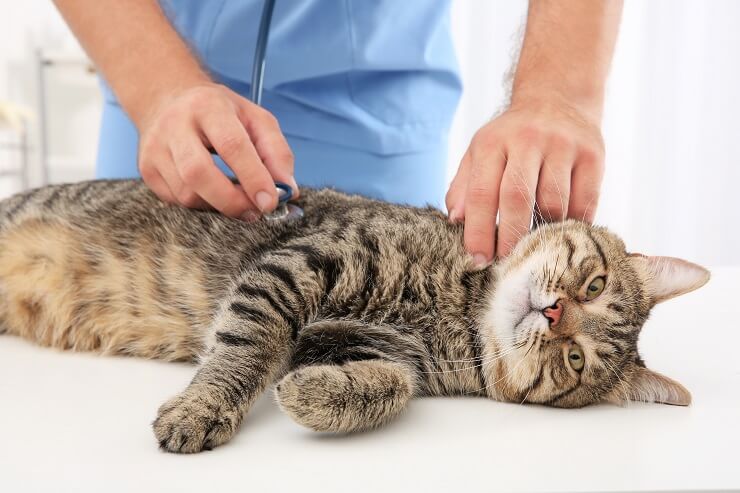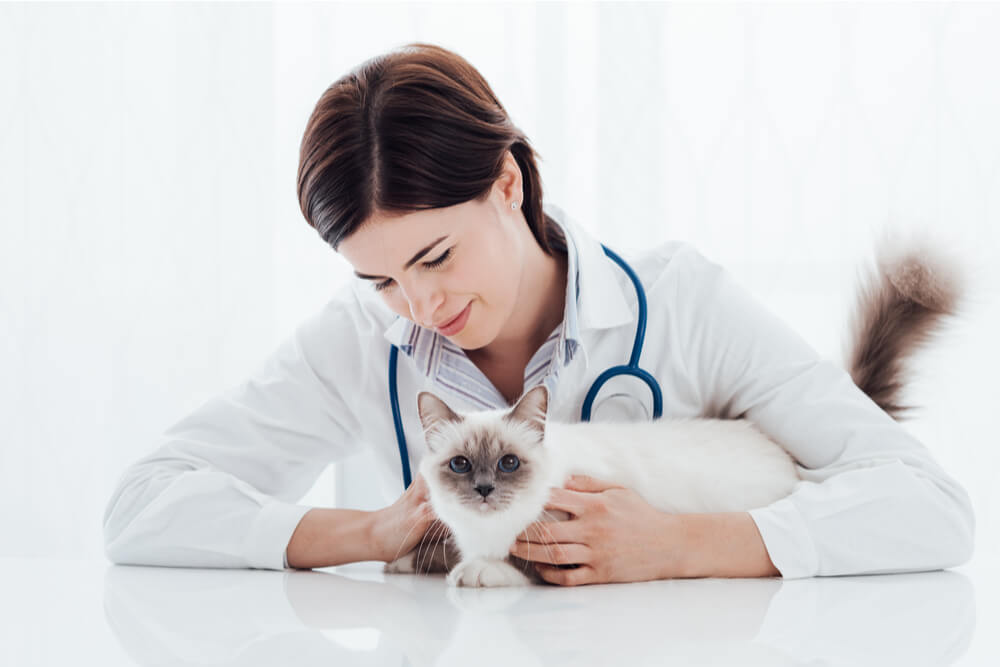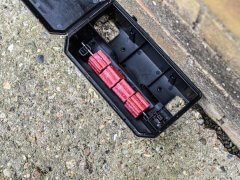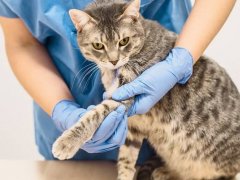
The aim of this article is to provide a good quality, accurate, easily understandable summary of the details about mushroom poisoning in cats.
Quick Overview: Mushroom Poisoning In Cats






About Mushroom Poisoning in Cats
The distribution of different species of mushrooms in different parts of the world, with widely varying climates and ecologies, means that it’s impossible to write an article with detailed information about poisonous mushrooms for every country. However, the general principles are the same everywhere.
The first point is that over 90% of mushrooms are non-toxic: for example, of the several thousand species of mushrooms found in North America, less than a hundred are toxic. Species of mushrooms in the genus Amanita are the cause of most mushroom poisonings.
Amanita poisoning can, indeed, be lethal, while ingestion of other toxic mushrooms is not usually life-threatening. Furthermore, it’s likely that many mild cases remain undiagnosed. Mushroom intoxication is very difficult to diagnose accurately in most cases, as specific tests are only available for amanitins and psilocin.
Treatment of most types of mushroom poisoning is mostly just general supportive care, although specific treatments are available for amanitin and psilocin incidents. In all cases of poisoning, prompt veterinary intervention can save the lives of poisoned cats.
Mushroom poisoning is far more common in dogs than cats, because of their natural eating habits: dogs are scavengers, far more likely to eat random items that they encounter (including mushroom ingestion), while cats tend to be fastidious and careful about what they ingest. However, as small animals, cats can be more vulnerable after ingesting even small amounts of toxic mushrooms.
What Are the Different Types of Toxic Mushrooms?
There are thousands of mushrooms in the wild, only some of which may be toxic to your cat. In general, the different types of toxic mushrooms can be grouped according to the toxic chemicals that they contain, as follows:
- Cyclic peptides, found in species such as Amanita, including Death Cap mushrooms (Amanita phalloides), Fly agaric (Amanita Muscaria), Destroying Angel (Amanita bisporigera), Panther cap mushrooms (Amanita pantherina) as well as Galerina and Lepiota species.
- Isoxazole derivatives (such as ibotenic acid and muscimol), found in some Amanita species as well as Tricholoma species of mushrooms.
- Orelline/ orellanine is found in Cortinarius species of mushrooms.
- Psilocybin and psilocin are found in a wide range of mushroom species, generally known as “magic mushrooms”, including Psilocybe, Panaeolus, Copelandia, Gymnopilus, Pluteus and Conocybe species of mushrooms.
- Monomethylhydrazine is found in Gyromitra genus of mushrooms, also known as “false morels” (because they are similar to Morchella mushrooms, or “true morels”, which are edible).
- Muscarine is found in Inocybe and Clitocybe species of mushrooms.
- General gastrointestinal toxins are found in a wide variety of mushrooms, too many to list individually.
Wild mushrooms are not the only source of mushroom toxins that can make your pets sick. Recreational drugs or ‘magic mushrooms’ tend to be hallucinogenic, contain several toxins that can make your pet ill.
Symptoms of Mushroom Poisoning in Cats
The clinical signs shown by cats suffering from mushroom poisoning depend on the type of mushroom that has been ingested: the symptoms relate to the precise toxin contained in the mushroom. Each of the main groups is listed below, along with the main area affected, and the expected symptoms that are caused.
- Cyclic peptides. Hepatic signs caused by liver failure. Signs start around 12 hours after ingestion, with initially abdominal pain, vomiting and diarrhea, which may seem to resolve, but then 1 – 3 days later, serious live and kidney issues develop, leading to collapse, seizures, coma and death.
- Isoxazole derivatives. Liver and nervous system affected, with signs starting within minutes or hours of ingestion. Vomiting, diarrhea, increased heart rate, hallucinations, seizures and collapse may be seen.
- Orelline/ orellanine. Kidney failure. Dullness, vomiting and diarrhea at first, leading to all the usual signs of kidney failure over the following days and weeks, with a serious risk of death.
- Psilocybin and psilocin. Nervous system. Signs develop within minutes or hours of ingestion, with lethargy, disorientation, dilated pupils, hallucinations, vocalization, aggression, and other signs. Cats may become agitated, grooming themselves more than usual. Most cases recover within 8 hours although residual signs such as dullness and dilated pupils may last a day or more.
- Monomethylhydrazine. Nervous system. Signs include dullness (or agitation), vomiting and diarrhea, and sometimes seizures.
- Muscarine. Gastrointestinal and nervous systems. So-called muscarinic signs start rapidly, within minutes or hours, and include vomiting, diarrhea, drooling with copious salivation, streaming eyes caused by increased tear production, increased urination, nasal discharge, and difficulty breathing.
- General gastrointestinal toxins cause dullness, vomiting and diarrhea, with signs starting within minutes or hours. Most cases resolve within a few days.
It’s highly important that all affected cats are taken to the veterinarian at an early stage so that early, life-saving, treatment is given.
Diagnosis of Mushroom Poisoning in Cats

Your veterinarian will check your cat over carefully, ruling out other causes of the signs that are being shown and carry out a neurological examination if your cat has dilated pupils, trembles, experiences ncoordination or seizures.
Often, there will be a history of known mushroom exposure followed by your cat becoming unwell, so a presumptive diagnosis of mushroom poisoning may be made at once. In other cases, a cat may present with signs that are suspicious, and the vet may need to go through a process of making an accurate diagnosis.
Contact with toxicology support sources, such as mycologists, mushroom identification websites (such as the North American Mycological Association, the animal poison control center or the ASPCA poison advice library may be helpful.
Detailed History Taking
Your DVM veterinarian will discuss every aspect of your cat’s life, looking for clues that may include possible exposure to possible toxins, including mushrooms. This may include asking you about the areas where the cat spends time, and the possibility of mushrooms growing in these areas. If you have photographs of mushrooms you may have seen, this can help the diagnostic process.
Physical Examination
Your veterinarian will check your cat over carefully, ruling out other causes of the signs that are being shown. A detailed neurological examination will be carried out if your cat is showing signs such as dilated pupils, trembling, incoordination or seizures. Your vet may collect vomit and feces samples onto paper towel, inspecting this for the presence of mushrooms, as well as checking samples under the microscope for mushroom spores.
Routine Blood Tests and Other Laboratory Work
Your veterinarian is likely to suggest blood tests, including the usual panel of diagnostic tests, such as hematology (complete blood count) and biochemistry profiles.
Urinalysis may also be carried out.
Other Investigations
Ultrasound examination of the abdomen and an EKG may be carried out.
Specific tests may be carried out if amanitins and psilocin poisoning is suspected.
Treatment of Mushroom Poisoning in Cats

The prognosis depends on the severity of the signs, the type and quantity of mushrooms eaten, and the individual ability of your cat to deal with the toxins.
General Treatment
The priority initially is to stabilise any signs of illness that your cat is showing.
- Anti-emetic treatment to stop vomiting
- Anti-seizure medication if a cat is suffering from seizures
- Intravenous fluids to minimise the impact of the mushroom toxins on the liver and kidneys
- Medication as needed to control electrolyte abnormalities (such as elevated potassium levels)
- Other medications as needed to minimise the signs the cat is showing, such as atropine to treat muscarinic signs of poisoning.
Decontamination
At the same time, specific treatment to remove any elements of the mushroom from the body should be carried out, to prevent further absorption of toxins.
Vomiting may be induced, gastric lavage may be carried out, activated charcoal may be given, and enemas may be administered.
Prognosis
The prognosis depends on the severity of the signs, the type and quantity of mushrooms eaten, and the individual ability of your cat to deal with the toxins.
Prevention of Mushroom Poisoning in Cat
Regularly check your garden or yard for mushrooms, and remove any that you see. Although most are harmless, you cannot be sure.
Recreational mushrooms or ‘magic mushrooms’ should be kept out of reach of cats and locked away.
Conclusion
Mushroom poisoning is a specific diagnosis linked to exposure to particular mushroom species. General supportive treatment from your veterinarian is the main form of treatment, as well as some treatments that are specific to the type of mushroom that has been ingested.
Frequently Asked Questions
What are the symptoms of mushroom poisoning in cats?
Signs include primarily gastrointestinal and neurological signs, but a wide range of signs is possible depending on the precise mushroom ingested.
Can cats die from mushroom poisoning?
In many cases of mushroom poisoning, death is possible, and prompt treatment of poisoned cats is essential to minimise this risk.
How long does it take to get mushroom poisoning?
Some species of mushroom cause rapid onset signs of toxicity, while in others, it can even be days before the most severe signs, and possibly death, occur.
How does mushroom poisoning affect cats?
Each type of mushroom affects cats differently: see the details in the article above for the different possible effects.








There are mushrooms in my yard that I’m not sure what kind they are. I’m worried about stepping on one and having traces of it on my shoes and bringing them into house where my indoor cat and dog are. Could small traces of a poisonous mushroom cause a problem to pets if brought inside on a shoe and they ingested even a small trace?
This is highly unlikely to cause a problem. I think it would make sense to try to identify the mushrooms, just for your own awareness of all possible risks. But a trace of mushroom on shoes would be very unlikely to be enough to cause toxicity.